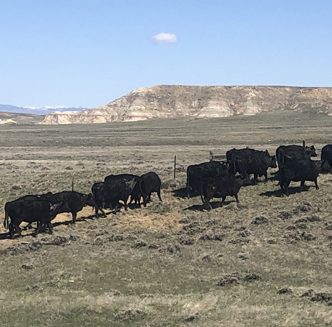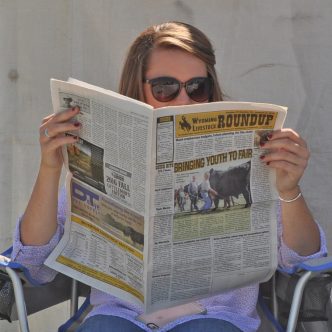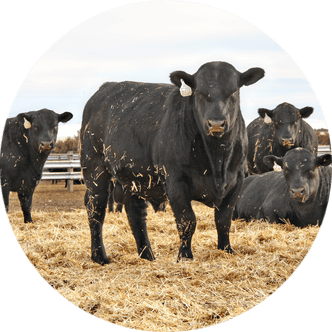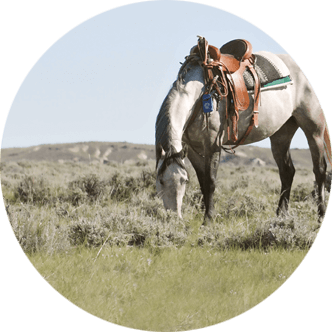Growers can start planting seedlings indoors
Starting seedlings indoors allows growers to get a head start on the season, often leading to a more fruitful harvest and allowing them to plant a much wider range of varieties than the transplants found at the store, which can also be more expensive than purchasing seeds.
According to multiple sources, seeds should be started indoors about six weeks prior to the area’s last frost date, and with a last frost date ranging from May 1 to June 31, some Cowboy State gardeners can begin sowing seeds indoors any time now.
Getting started
When planning for indoor seed starting it is important to remember not all seeds should be started indoors. In fact, many vegetables grow better when they are started outdoors and prefer not to be transplanted.
According to the 2025 Old Farmer’s Almanac, crops best started indoors include broccoli, Brussels sprouts, cabbage, tomatoes, cauliflower, celery, eggplant, peppers, radishes and peas, as well as many annual flower varieties.
Sources agree seeds should be started in small, divided, individual containers to prevent seedling roots from growing into each other and being injured during transplanting. This could include anything from small plastic pots to egg cartons.
Containers should be fitted with a clear plastic dome – or plastic wrap – to allow light in, retain heat and keep moisture from escaping. Domes or wraps should be removed when the seedlings are tall enough to touch them.
Experts recommend filling containers with a soilless seed-starting mix, usually composed of peat and vermiculite, which is sterile, lightweight and free from weed seeds, with a texture and porosity specifically crafted for germinating seeds and tiny seedlings.
According to a seed starting guide published by University of Minnesota (UMN) Extension, planted containers should be set out of the way of heavy traffic, pets, cold drafts and excess heat, and individuals should avoid placing planted seeds in a windowsill.
“A windowsill is not a good location for starting seeds,” UMN Extension writes. “Window sills can be the coldest place in the house, especially at night, and then the hottest during the day.”
“Most seeds need consistently warm soil to germinate and produce strong roots. Cooler soil temperatures can lead to seedling death due to disease, and excess heat during the day can dry out the potting mix, leading to seedling death,” UMN continues.
Planting and growing
Seeds should be planted according to the depth and spacing instructions outlined on the package, and containers should be labeled using a waterproof permanent marker.
It is also essential to provide seedlings with an artificial light source instead of relying solely on natural light.
Since plants need 12 to 16 hours of light each day, as well as a short dark period at night, UMN recommends installing a timer so lights turn on and off automatically.
Several sources also suggest using electric heating mats to provide a constant source of heat from the bottom up, since temperatures in the potting mix of indoor containers can be as much as five degrees Fahrenheit below the indoor air temperature.
“Bottom heat can help to prevent damping off – the death of tiny seedlings due to pathogens at the surface of the potting mix,” UMN states. “Seeds of most plants started indoors germinate sooner and produce healthier roots when the potting mix is warm.”
Experts note it is also essential to keep potting mix moist while seeds are germinating, and they mention the best way to do this is to gently mist the surface with a spray bottle daily to avoid washing potting mix out of the containers.
UMN notes, “Seedlings draw energy for germination from nutrients stored in the seed. They don’t need fertilizer until they have several sets of true leaves.”
At this time, they recommend using a weak general-purpose, water-soluble fertilizer mixed at one-fourth strength once a week.
Transplanting
When seedlings start to outgrow their individual cells – usually around the time they have two pairs of leaves – they should be transplanted into containers one to two inches wider in diameter than the cell packs. Larger peat pots or plastic cups with holes punched in the bottom work well for this.
“Don’t delay transplanting seedlings, as you don’t want them to become overcrowded, which can cause all sorts of issues, such as leggy seedlings or disease,” notes the Old Farmer’s Almanac.
Growers are reminded to handle seedlings by their leaves, taking special care not to damage fragile stems and roots.
“One way to do this is to bring along as much of the potting mix around the roots as you can,” the Old Farmer’s Almanac reads. “This is one reason, in fact, why working with really young, small seedlings is often better – they are really quick growing and their roots are nowhere near as extensive as more established seedlings, so there’s less root to damage.”
It is important to note, larger seedlings in larger containers will require more space and often another set of lights.
When it is time to move seedlings outdoors, growers are reminded to do it gradually since plants started indoors will not have been exposed to full sun, fluctuating temperatures, wind and other elements.
“If seedlings are not gradually accustomed to the outdoor environment – a process called hardening off – their leaves may be scorched by sun or wind. They may even wilt or die,” notes UMN Extension.
To harden off seedlings, they should be placed outside in the shade for a few hours during the warm afternoon in a location protected from wind two weeks before they are planted outdoors, then moved back inside before temperatures begin to drop at night.
Each day, plants should be left out a little longer than the last to expose them to more and more sunshine.
“Keep soil moist at all times during this period,” states the Old Farmer’s Almanac. “Dry air and spring breezes can result in rapid transpiration.”
By the end of the two-week period – unless there are freezing temperatures in the forecast – seedlings can stay outside in a sunny area until they are ready to be permanently transplanted into the garden.
“Hardened-off plants may wilt when first exposed to full sun, but they generally recover within a day or so,” UMN explains. “Row covers and other types of plant protectors can help plants get off to a good start in the garden by reducing damage from wind and temperature fluctuations.”
The Old Farmer’s Almanac continues, “If outdoor conditions allow, plant seedlings outside while they are still quite young – sometimes as soon as three to four weeks after first sowing. Younger seedlings tend to establish quicker than those that have become root bound in their containers.”
Hannah Bugas is the managing editor of the Wyoming Livestock Roundup. Send comments on this article to roundup@wylr.net.





